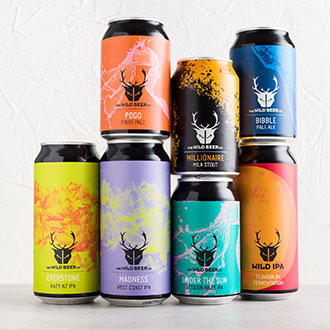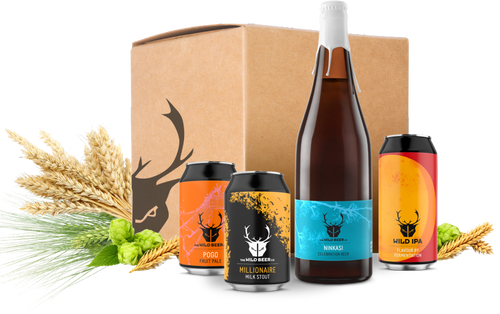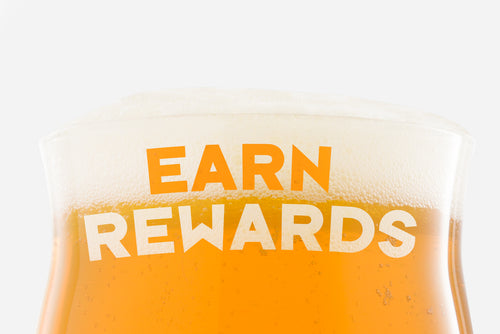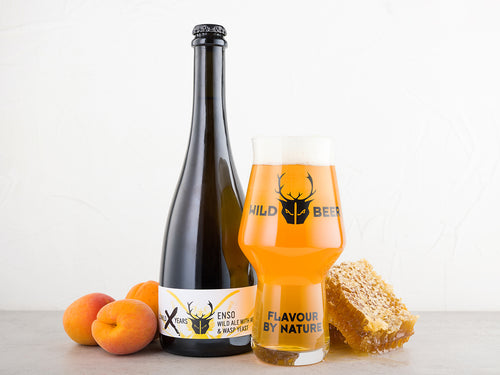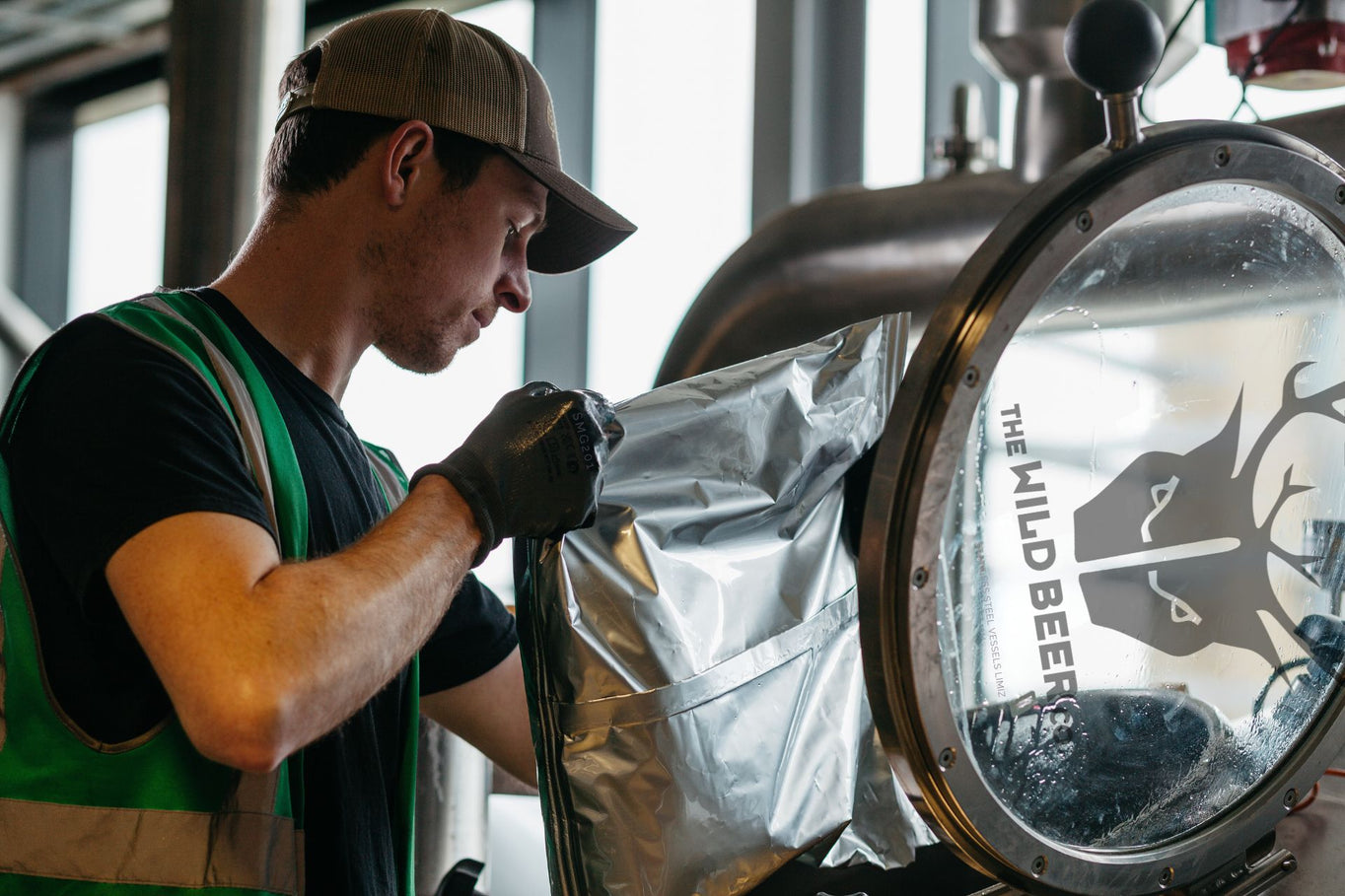More On Thiology - A Modern Brewing Technique
30/09/2022Here at Wild Beer Co we are always looking for new ways to develop flavour in our beers. But what gives the beer its flavour and why do we care so much about it? Well, flavour can come from every single ingredient, primarily the flavour of a beer comes from the malts and hops used during the brewing process. We often experiment with different ingredients to introduce or enhance the beer's taste, for example we have previously used strawberries, grapes, apple juice and even seaweed in our beers. The way in which the beer is brewed can also alter the final product's flavour, the majority of our barrel aged beers are characterised by sour and vanillin accented tannins when blended. Flavour is everything at Wild Beer, we pride ourselves on creating the best beers to compliment food and, for that to be possible, the beer must be flavoursome and delicious. When we heard about the possibility of discovering hidden flavours, we knew we had to explore the mental world of Thiology.
A quick warning: this blog is going to get very technical very quickly. To begin with, it is probably best that we provide an overview of what thiols are and what we are trying to achieve. At its core, a thiol is a chemical compound that creates flavour. Our goal is to elevate these flavours AND release flavours that are trapped. We have cracked the davinci code of craft beer. For the absolute beer nerds out there, keep on reading for the full scoop.
Thiology is all about releasing bound thiols from the malts and the hops that we use whilst brewing. Thiols are a broad group of sulphur containing chemical compounds that are active in flavour in very small amounts (parts per trillion). The best examples are the blackcurrant/gooseberry and tropical notes that are commonly associated with Marlborough Sauvignon Blanc. However, some of the best known off-flavours in beer are also Thiols - Lightstruck (skunky) and Mercaptan (drains) are both thiols.
We currently utilise free thiols by dry hopping with certain sexy varieties of hops, but Thiology allows us to release Thiols that are otherwise unavailable to the nose. Hops such as; Mosaic, Simcoe and Nelson Sauvin can deliver large quantities of free thiols, creating aromas of passion fruit, citrus fruit and sav blanc wine/blackcurrants.
The interesting thing about these compounds is that they are so flavouractive you can start to perceive them at very low levels, with flavour thresholds in the parts per trillion (equivalent to drops in an Olympic sized swimming pool). So we don’t need very much, which is just as well because thiols make up less than 1% of the essential oils of a hop cone.

Our journey started with a beer called Release The Stars. This beer was a collaboration brew with our friends at Thornbridge. We succeeded in releasing bound thiols in Calypso hops which were chosen for their high level of bound thiols. We used a wine nutrient to stimulate our house lager yeast which freed up these thiols - creating an intensified hop character that we had never seen before.

The 2nd in our Thiol series was a beer called Thiology. The aim was to release thiol aroma compounds from the malt and hops used, by way of mash hopping and an innovative blend of yeasts from Whitelabs R&D. We looked at the synergism of certain free thiols in Hallertau Blanc amplifying the apricot hop esters found in Southern Cross. We used Saaz, which is really high in bound thiols, and we introduced it to the mash. Exposing this to malt enzymes (that are active in the mashing process). Whitelabs R&D let us use their new BioDive Hazy yeast blend for this project. A blend of three of their highest performers when it comes to releasing bound thiols. These were a Kveik yeast, an English Ale Yeast and an East Coast US Ale yeast. Using two hops to amplify each other's contributing aromas. Southern Cross from NZ is high in 2MIB (an apricot like ester) mixed with the exotic/rhubarb/grapefruit 3S4MP thiol found in high quantities in Hallertau Blanc.
Our 3rd experimental beer in our Thiology series is a beer called Cry’O The Coast.
Inspired by the latest trend/craze from the US, we have been listening to podcasts and consuming blog posts from the likes of Scott Janish, Master Brewers Association of the Americas. Working with our suppliers, we began to work out how we could convert non-flavour active Thiol Precursors into outrageously fruity flavourful Free-Thiols.
The aim of this thiol-centric brew was to deliver a beer that showed off thiols in large amounts - focussing on the free-thiols that we could extract in our dry hop charge. To this end, working with Sean and Darron at Siren Craft, we landed on thiol-rich varieties that we know give those fabulous fruity aromas. Mosaic (which delivers the passionfruit hit in Bibble) and Simcoe (that gives orangey-notes to Quantic).
We drew on our earlier Thiology brews (Release the Stars and Thiology) and took the positives and removed the negatives to preload our wort with (bound) thiol precursors. We loved the hop flavour that was achieved with mash-hopping in Thiology, where the Saaz dry hop characters of Rolling Pils were evident (despite introducing the hops at an early stage)
Instead of Calypso (Release The Stars) or Saaz (Thiology), we decided to use cryo-cascade on the hotside as our thiol precursor donor. We stuck with 30% maize to reduce the amount of (nitrogen) nutrient available to the yeast. Our goal is to starve the yeast in an attempt to release the Beta Lyase enzyme that frees up amino acids (nitrogen) from bound thiols. The fortunate by-product of this aa scavenge by the yeast is lovely flavourful fruity thiols. A significant addition to this brew was Whitelabs Yorkshire Square ale yeast. A yeast gaining popularity in the US - providing a favourable fermentation character whilst boasting Beta-lyase activity. We used this yeast in parallel with the Biodive Hazy used during the Thiology fermentation and really enjoyed the aromatics created.
To say we hit the brief is an understatement. While we were centrifuging this beer (to remove the yeast and dry hops charge) the room was filled with a tropical juice aroma that we would normally associate with Pogo. That tropical juice character is prominent in the flavour and aroma of this delicious modern west-coast inspired beer.
Next steps
So far our focus has been expanding the profiles of Free-Thiols from dry hops. The next goal of this project is to see if we can free levels of thiols from our regular raw materials. Our grains and some of the more locally grown hops varieties have bound thiols that are there for the taking if we can work out how to persuade our yeasts to release them from their amino acid bondage.
The US has engaged the help of Genetically Modified yeasts where the need for nitrogen starvation has been removed, and so the Beta Lyase production is always active. At the current time GM organisms are still banned in Europe. The targets for future Thiol brews are:
• To increase the levels of bound thiols available into the wort pre-fermentation
• Working on the yeasts and wort composition to encourage that ever so important conversion of the Bound to Free-thiols.
Keep your eyes peeled for the next in the series.
